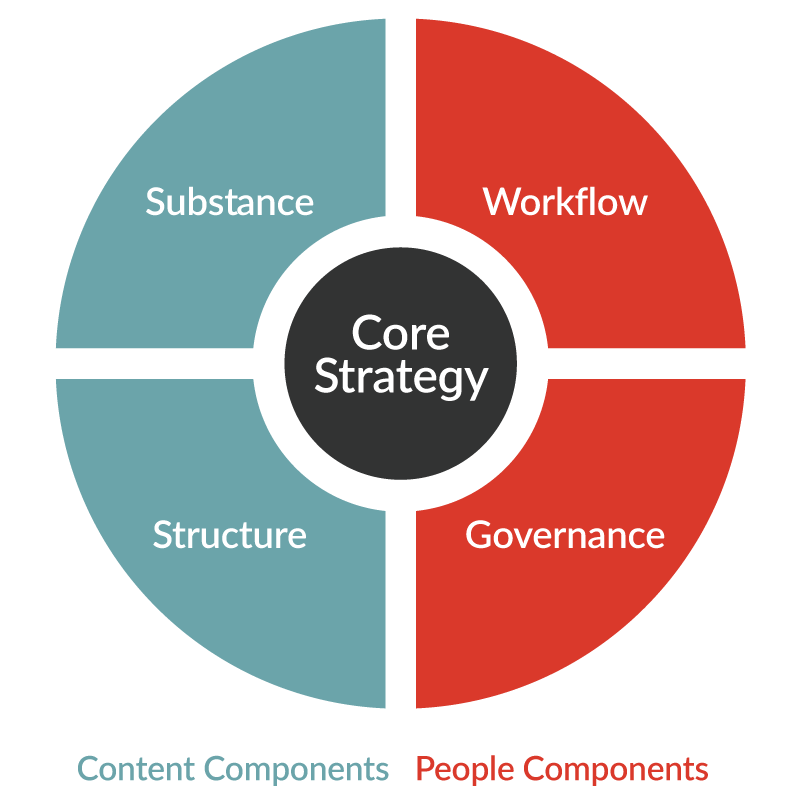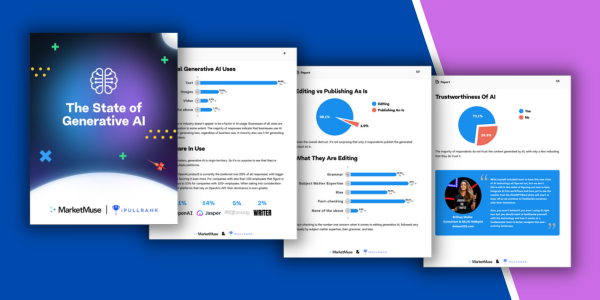At iPullRank we have been using Generative Pretrained Transformer (GPT) technologies since early 2020 with GPT-2. It’s been an exciting experience of combining data mining techniques with generative AI to build scalable content with true utility for users.
So, it’s been somewhat strange to watch the world at large catch up, with the advent of ChatGPT. Although there have been new tools and innovations emerging at a rapid clip, organizations are still trying to wrap their heads around how to use generative AI as teams.
Many companies come to us asking for our insight to sift through hundreds of tools they should be using and how they can leverage the tech for their websites and content marketing efforts. And, while it’s exciting to see how eager they are to get in the game, it’s the wrong question.
What they should really be asking about is, how to build workflows and governance models around generative AI tools and how to bake them into their existing toolkits.
In other words, they should be asking, “how do we build a content strategy for generative AI?”
This is true of all organizations, but especially true of the enterprise brands that we work with. Big brands tend to move slow. Introducing generative AI into these companies requires vetting and significant organizational change so they are slow to adopt new tools. To some degree, the space is moving too quickly for enterprise brands to keep pace. In fact, this is reflected in our forthcoming study on generative AI content with MarketMuse. We polled hundreds of marketers in an attempt to understand how they are using generative AI tools in their companies.
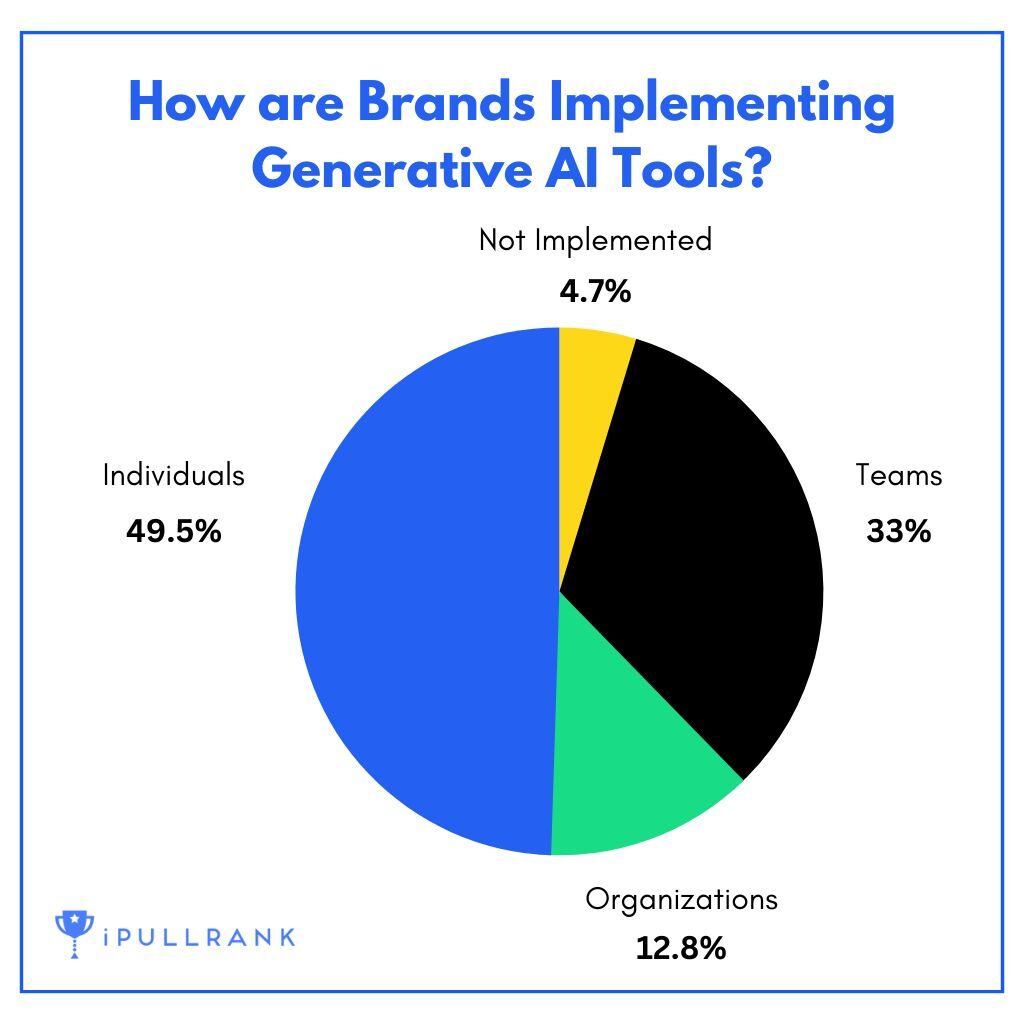
Our findings directly reflect what we’re seeing with our clients. Although ChatGPT is ubiquitous, people are primarily using it at the individual level and not as part of a strategy governed by their company. Granted, many people are doing a great job of using it as a force multiplier being left to their own devices, but, true scale comes from organizational alignment and integration.
Table of Contents
The Generative AI Hand-Wringing is Over
With generative AI being viable out of the box for the web since GPT-3, there was a lingering question in the SEO space of whether Google would penalize the content output. Potential losses had far-reaching implications across content marketing as a whole since content created for the web is often done expecting that Organic Search will be a primary traffic driver.
Just prior to the launch of ChatGPT, I talked about the difficulty of detection of generative AI content. With the advent of ChatGPT and the array of generative AI tools that have sprung forth from Google’s technologies, their position on “machine-generated” content has since changed and we are now off to the content arms races. The announcement of Google’s AI Overviews further solidifies that generative AI will be front and center moving forward.
Some folks are against the usage of such technologies, and that is fine, but with a reported 64.7% of business leaders looking for ways to leverage generative AI in their content marketing efforts, they may see content moats sprout up all around them.
When the rate of change outside your company is faster than the rate of change inside it, you will be left behind.
Learn More: Find out how AI is impacting content and SEO. Download the guide.
On Content Strategy in Marketing
In the marketing world, to the detriment of content campaigns everywhere, content strategy and content marketing have often been conflated.
It’s happened so much that the original Content Strategists have all but abandoned the term and switched into other disciplines such as Content Design and UX Writing. Persnickety nomenclature aside (I’m not really the person arguing with you about the difference between a “strategy” and a “plan”), the principles of content strategy are still very alive and are important considerations when introducing generative AI into an organization.
Content strategy, as I learned it from Kristina Halvorson’s discipline-defining book “Content Strategy for the Web,” breaks it into the following five components:
Core Strategy
The core strategy is the overarching approach that a brand takes with their content. Your core strategy should guide everything an organization does with its content, from the topics covered to its distribution channels. It answers questions like:
- What is it that you are looking to accomplish with content?
- Who are you trying to reach?
- What do you want them to do?
- Are there specific formats we should limit ourselves to?
Understanding the core strategy is essential to creating a successful content strategy. It ensures that all of your content is aligned with your brand’s voice and mission, and that it is designed to resonate with your target audience. Without a clear core strategy, your content may lack direction and fail to deliver the results you are looking for.
In marketing, this is often where brands fail because of so many conflicting needs across the business. In content marketing specifically, a lack of a core strategy can also yield failure because content assets are treated as isolated incidents rather than an element of a bigger effort.
Content Substance
The substance is all about the content itself. This aspect of a content strategy answers questions like:
- What topics are most relevant to your audience?
- What type of content are you creating?
- How will you differentiate your content from competitors?
- Is it blog posts, videos, podcasts, or something else entirely?
- What topics will you cover, and what tone will you use?
Substance is all about what and how you will create content that resonates with the target audience. In content marketing, the discussion often starts and stops here.
Content Structure
The structure is all about how content will be formed. On one level we’re talking about visual presentation, on another level we’re looking at information architecture. As it pertains to today’s conversation, content modeling is the most important aspect to understand. Content modeling is the process of defining the structure of your content in a way that makes it easy to create, manage, and distribute across different channels.

In defining content structure, the following questions are answered:
- What is the best format for the content?
- What are the elements of the content?
- How long is each element of the content?
- How will the content be organized?
- Where will the content live?
Effectively, content structure is where you define the requirements of your content. Those requirements are then shared as early as your content briefing stage and are incorporated into how content is modeled within your CMS or the channel where it lives.
Content Workflows
Workflows are all about the processes related to content. Not just the creation of it, but the ideation, production, promotion, and maintenance associated with it. For organizations, process is everything and clearly defining them is how successful content systems are built. Questions answered at this stage are:
- Who is responsible for creating the content?
- What is the content creation process?
- What tools and technologies are needed to support the content workflow?
- How will the content be measured and optimized over time?
Having a streamlined workflow in place ensures that all stakeholders involved in the process know what’s expected of them and can work together efficiently.
Content Governance
Although closely related to workflows, content governance refers to the policies and procedures that govern content in an organization. It’s the development of a shared understanding of what needs to be accounted for and who approves content at each stage. For instance, in the case of pharma brands, there is often a stage of medical-legal review that involves doctors and lawyers before something as simple as a title tag can be changed. There are also brand reviews or other sorts of hierarchical reviews in organizations. These are the types of questions contemplated when determining content governance:
- Who is responsible for managing the content?
- What are the policies and guidelines for creating and publishing content?
- What are the legal and regulatory considerations for content?
- Who are all the stakeholders that must review content?
This includes everything from who has the final say on content decisions to how you’ll handle content updates and archiving. Governance ensures that your content is consistent and aligned with your brand’s voice, tone, and core strategy.
When working with enterprise brands, governance and workflows are the most difficult to change and the most important to the success of content being published. They are also the elements of a content strategy that impede the successful rollouts of generative AI across companies.
Why You Need Content Strategy
Generative AI can produce a vast amount of content instantly. Leaving the usage of generative AI to individuals without guidelines or processes can result in a lack of cohesiveness and a waste of resources. ChatGPT used incorrectly is really good at helping you go nowhere fast.
Think about it in terms of our five components of content strategy. Content developed without substance considerations yields content that does not resonate with the audience. Content generated without structural considerations becomes content that must be edited for length and format. Content created outside of workflows and governance models is content that gets stalled or that the right people are not aware of.
Content strategy helps businesses ensure that the content produced by generative AI is consistent with their brand messaging architecture. This is crucial for building and maintaining a strong brand identity. Voice and tone considerations should be baked into the prompt engineering so that everyone in the organization is operating from the same base.
Ultimately, it’s easy to spot a brand without a content strategy in place. There is usually a wide array of voices, formats, and series that sprout up and disappear, and a very disorganized site architecture. Generative AI will only compound these issues.
Learn More: Get iPullRank’s 70-page enterprise content strategy guide. Download the guide.
Rapid Prototyping
Content strategy also opens up a new world of extremely rapid prototyping.
Previously, when we pitched content ideas to our clients, we’d describe the idea, find a competitive example, or give a mockup of a simplified version to communicate the idea. Now, with generative AI tools, you can spin up a fully formed example instantly. By having a content strategy in place, businesses can set clear parameters and base-level conditions for their prompts to yield viable prototypes. With these parameters in place, generative AI can be used to rapidly-produce a range of content options that align with the business’s goals and objectives. Abstract ideas become concrete with variations in messaging, tone of voice, and content formats, such as blog posts, social posts, or emails.
Content Models Should Be the Constraints
Content modeling is the act of organizing and structuring content. The output yields a series of constraints on content, one of which is the sizing of each component. These limitations govern the length of content and should be baked directly into prompts.

Naturally, there are many prompts available for generating page titles and meta descriptions and their character counts are baked in. Websites also have such limitations baked into their components. Documenting these elements and incorporating their specifications into prompts yields content that is more directly usable without heavy editing.
The Tools Should Be Baked Into the Workflows
There is an explosion of generative AI tools built on top of OpenAI’s technologies, several other APIs, and open source libraries. While it’s tempting to try all the new shiny things out, tools that don’t enhance existing workflows can introduce inefficiencies. They require changes to well-worn processes and training to get team members ramped up. Even then people may not completely adopt the processes and you run the risk of getting introducing new inconsistencies.
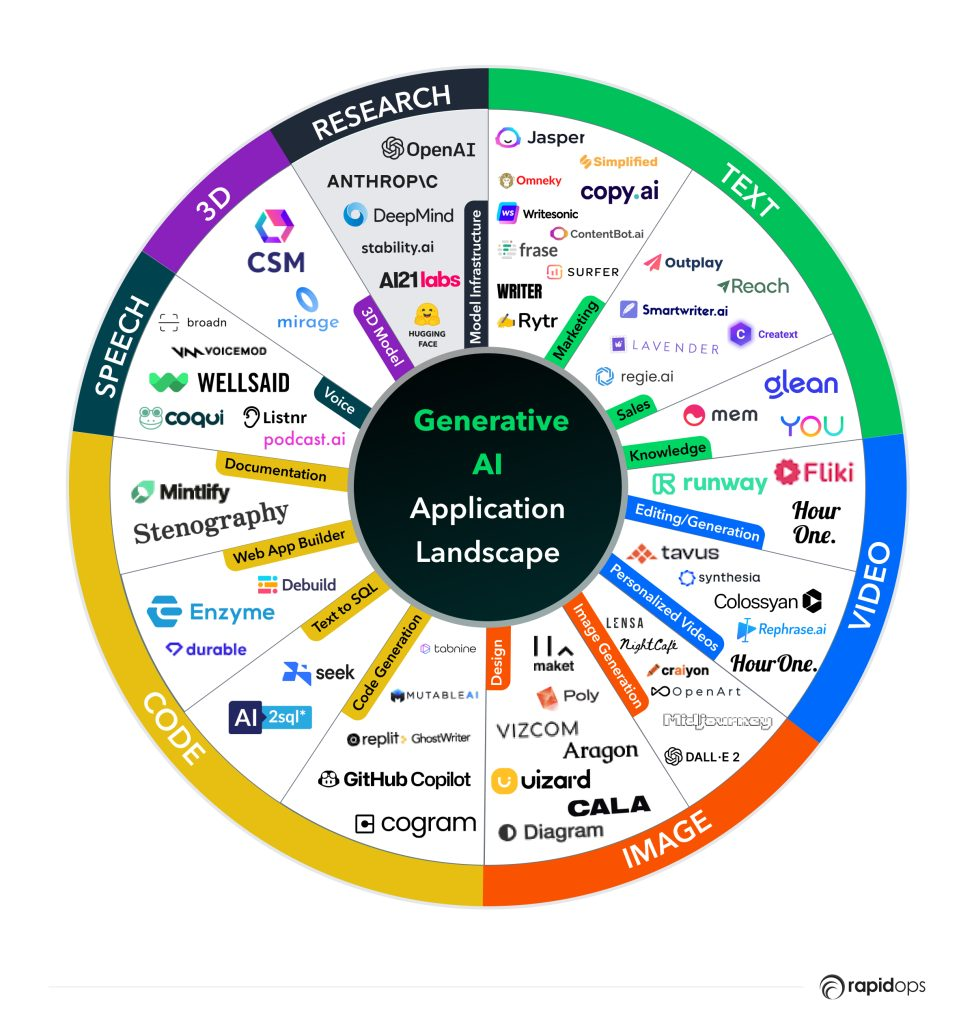
Although Google is in Empire Strikes Back mode, the world is currently bought into OpenAI. Its APIs are easy to use, integrate, and the tech works very well. Since the emergence of ChatGPT, users have been abandoning many of the AI writing tools using GPT-3 for ChatGPT itself. For adoption of generative AI, it’s best to use their tooling or integrate their APIs into your existing tools. Google integrating PaLM 2 (and soon Gemini) into Google Docs, Sheets, and Slides is threatening OpenAI’s position, but is better for the adoption of generative AI functionality in workflows.
Companies need to take the same approach and consider integrating the functionality directly into their CMS or the writing tools that they use. Alternatively, use very similar tools to your existing tools that have it baked in.
Your Team Needs a Prompt Library
Despite all the jokes about new roles that pay north of $300k, prompt engineering is a specific skill set that requires patience and attention to detail to perfect. Although this may not last, generative AI tools currently rely on prompts to generate content. A prompt is essentially a starting point or a set of guidelines that the AI uses to create content. By providing the AI with a prompt, users can influence the tone, style, and content of the generated text.
The ease of interaction with ChatGPT to produce an output mistakenly makes users believe that short and simplistic prompts are enough to get the level of quality output that they are expecting. Really, longer and more detailed prompts are more likely to yield content that meets expectations.
Prompts to generate text should be composed of five parts:
- Context (or constraints) of the request
- Role you want the generative AI tool to play
- Task you want it to complete
- Description of its instructions
- Refinements (or examples) that further clarify what you want it to do
While ChatGPT will give you output from very short prompts like {explain how ice cream is made}, that is not likely the content that you want. Without experience with prompt engineering, most people will do just that.
To ensure consistency in the content generated by the AI, it’s essential to have a prompt library in place. A prompt library is a collection of pre-defined prompts that are tailored to the business’s needs, goals, and messaging architecture. The prompts in the library can be designed to reflect the specific language, style, and terminology used by the business, ensuring that the generated content is coherent and on-brand.
A prompt library can also facilitate the creation of specific types of content. For example, if a business wants to generate social media posts or email newsletters, it can create prompts that are specifically designed for those formats. This can help to ensure that the generated content is effective for the intended audience and channel.

This is why a tool like Promptitude is so valuable. Over a billion people already know how to use ChatGPT. People are already going to that ChatGPT and the interface is intuitive. Adding a layer of vetted prompts that reflect your content strategy and requiring your team to use them brings consistency to their output.
Your Generative AI content strategy should be more than just text
The prevailing conversation about generative AI is associated with ChatGPT, but new tools are emerging daily for imagery, audio, and video as well. Admittedly, many of those tools are still a bit unwieldy as it relates to generating consistent outputs. Nevertheless, they are rapidly improving. So, it would be a mistake to prepare a content strategy that omits them.
A common ask we get from clients is, how might we use AI to convert between formats? There are many tools that will take a blog post and convert it into a video.
How We Develop Generative AI Content Strategy
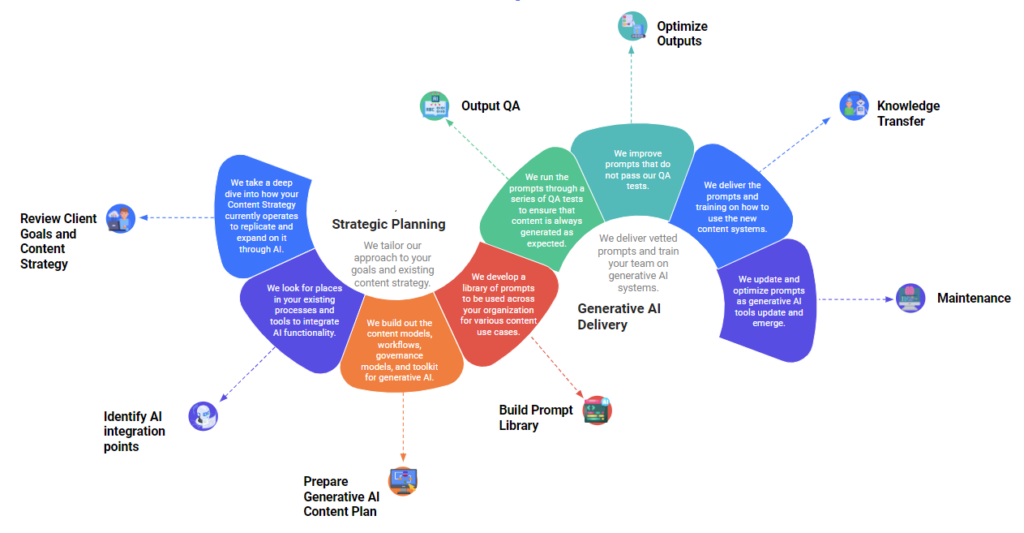
At iPullRank, we take a structured approach to building out generative AI content strategy to account for each client’s circumstances. Here are the stages that we take them through in order to get them ramped up. As an agency, our clients are fully functional businesses and we are looking for opportunities to plug in and enhance their inputs and outputs.
- Review Client Goals and Content Strategy – As with any type of consulting engagement, we must first understand what a business is trying to achieve. If they already have a content strategy in place, we do not need to upend it, we need to align with it and enhance it. Reviewing the existing content strategy gives us the constraints required to build generative AI around it. Any gaps in the existing content strategy can also be opportunities for improvement.
- Identify AI Integration Points – We document and review the content processes and tools to see where generative AI tools can be plugged in. This can be in the form of API integrations into existing tools or the introduction of new tools. Our preference is the former since it does not require an organization to learn or procure entirely new tech.
- Prepare Generative AI Content Plan – After the discovery work has been completed, we take all the insights we’ve gathered and document the content models, workflows, governance models and how generative AI can be aligned with them. We also introduce the right toolkit to meet organizational needs.
- Build Prompt Library – Once the strategic inputs and constraints are established we build a series of prompts for all the use cases identified in the Content Plan.
- Output QA – With the prompt library developed, we put the prompts through rigorous testing to ensure they deliver consistent output.
- Optimize Outputs – Based on the learnings during the QA process, we edit the prompts with additional constraints to improve output consistency.
- Knowledge Transfer – Once the Prompt Library is ready, we work with teams to implement the new toolkit and processes. This comes in the form of documentation and training sessions.
- Maintenance – Organizational situations change. Tools change. As they do, we edit prompts and run them through the QA and optimization processes again to keep the Prompt Library fresh and up to date.
We’ve been doing content engineering since our inception, so incorporating this into our offering has not been the seismic shift that it has for many other groups. As a result, we’ve been able to move very quickly to help brands use generative AI tools to build content moats.
Content Moats are Springing Up All Around You
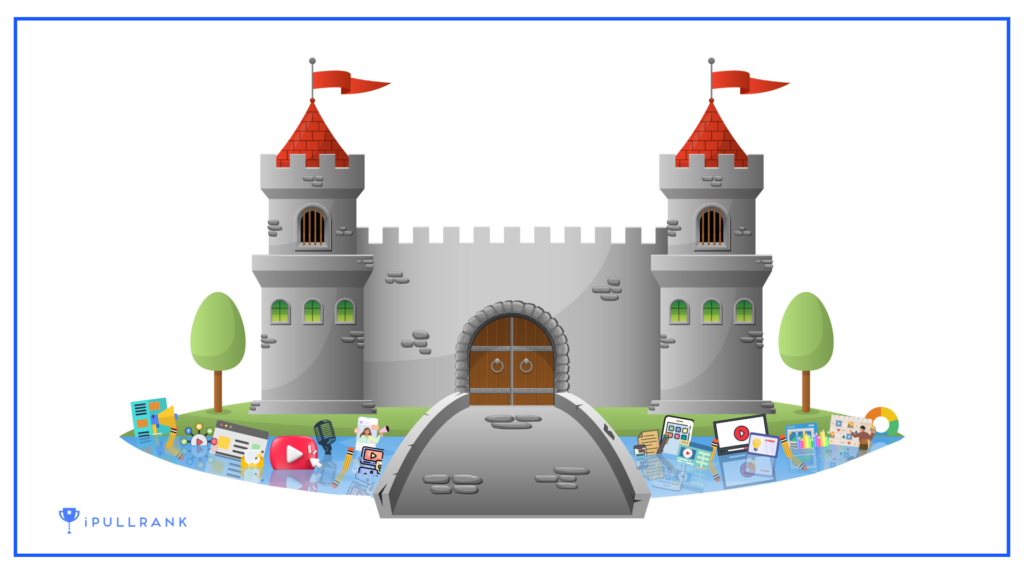
Everyone has access to generative AI tools, just like everyone has access to Python or C++. Right now it’s like there are infinite Ikea furniture pieces in front of us and only a few of us has the instruction manual. And, if you’ve ever put together Ikea furniture, you know that the instruction manual is not enough. You start to put the sofa together only to realize a piece is missing, or you didn’t have the right Allen wrench, or you wish that you paid the extra $50 for delivery and assembly.
Many people are persevering as individuals, but it’s the groups that are doing this as a team and keeping their brand front and center that are rapidly building content moats. Companies like Red Ventures own brands like Bankrate that are already content moats and have already made a move to build content strategy around generative AI. That investment will put too much distance between them and their competition in the channels that their audience is in.
If you want to keep up with the competition in today’s digital landscape, investing in content strategy for generative AI is no longer optional – it’s essential.
Need assistance getting your Generative AI Content Strategy in place?
Next Steps
Here are 3 ways iPullRank can help you combine SEO and content to earn visibility for your business and drive revenue:
- Schedule a 30-Minute Strategy Session: Share your biggest SEO and content challenges so we can put together a custom discovery deck after looking through your digital presence. No one-size-fits-all solutions, only tailored advice to grow your business. Schedule your consultation session now.
- Mitigate the AI Overviews’ Potential Impact: How prepared is your SEO strategy for Google’s AI Overviews? Get ahead of potential threats and ensure your site remains competitive with our comprehensive AI Overviews Threat Report. Get your AI Overviews report.
- Enhance Your Content Relevancy with Orbitwise: Not sure if your content is mathematically relevant? Use Orbitwise to test and improve your content’s relevancy, ensuring it ranks for your targeted keywords. Test your content relevance today.
Want more? Visit our Resources Page for access to past webinars, exclusive guides, and insightful blogs crafted by our team of experts.

